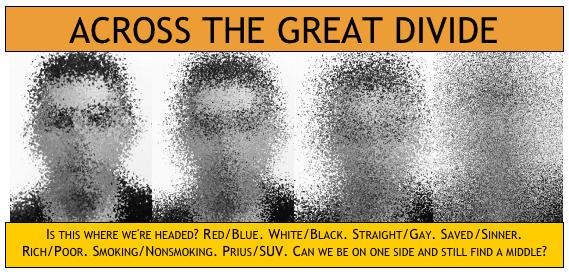Intentional Interventions
Thank god I still get a few opportunities to pontificate before a live audience.
"A writer, an architect and a product designer walk into an organizational development workshop..." This opening line would get a laugh only in a few places on earth — all having a high intensity of people with master's degrees. I was at one of them last week, and didn't tell the joke, though it was truly the setup for our workshop panel.
The conference was entitled, "Intentional Interventions." Yes, it sounds like alcohol treatment or a law enforcement technique used to bring a fleeing vehicle to a stop:
Methods of Forcible Stop
This model policy recognizes four (4) methods of forcible stop: intentional intervention, roadblock, hollow spike strip, and pursuit immobilization technique (PIT).
Intentional Intervention: Intentional intervention (ramming) of a vehicle is the deliberate act of hitting another vehicle with the patrol vehicle for the purpose of functionally damaging or forcing the other vehicle off of the road.
Intentional intervention should be considered lethal force.
But you HR folks in the audience knawwuddeymtawkin'bout.
No, "Intentional Interventions" wasn't a neo-con workshop on tactics for taking over the world, though maybe it should have been. It was actually a professional development course for trainers and organizational development (OD) consultants — the kind of people who help struggling organizations deal with change, sort out their problems and refocus their energies on the right things.
Some of my best friends are OD consultants, and I have learned a lot in their presence over the years, but contemplating their work never fails to make my head hurt. A lot. I am extremely low on the process-tolerance and suffering-fools-gladly scales. I cannot imagine making a career of what I once, as a corporate ghostwriter, described as wrestling with jellyfish.
Can you imagine how screwed up you have to be to pay thousands of dollars to a liberal arts major who will force you to spend extended periods of time in the presence of three-ring binders, flip charts and the very people who are making your life miserable? Ow, ow, owww!
There's more than one reason to call it OD.
Yet this workshop topic struck a chord: What can we learn about designing successful interventions from how other professions approach design problems?
Forget straightening out a dysfunctional department or keeping the union out of some factory. Where were the OD consultants on the Iraqi Intervention team? Who was asking the questions asked of our panel?
Who do you design for in your work? We are typically mediating between two parties — the sponsor of our work, who has a particular purpose or intention, and an audience or customer, who also has a purpose in using what we design.
What are the elements of good design you try to keep in mind as you work? Well, it always starts with research, truly understanding the problem, and then going back and reaffirming this understanding as you work. You immerse yourself and then step away to let your subconscious work. You strive to assemble all this information and find a unifying structure that makes intrinsic sense. You are constructing this thing in your mind, so it helps to visualize it, you create a model. You also need the involvement of other people. (They can help immensely to make it better, but also screw it up irretrievably.) A good design is ultimately simple, with nothing extraneous, so you start with a big pile of stuff, try different arrangements, and keep looking for what can be taken away.
What roles does the client play in the design process? The client defines the goal and understands their business better than we do. They will give insight and feedback and ultimately must approve the solution. But they also must grant the freedom to explore different options and not try to predetermine the result.
What other external factors do you consider? Traditions, culture, conventional frameworks— how people think and process information and emotions. A building, especially, must take into account its surroundings and the environment. We're also responsible for designing a solution that can be built and will actually function in the world.
How do you assess the success of a design? How do you know when it's right? A successful design has to meet its goals, and you may not know that right away. But when a design is right, you usually know immediately when you see it. It's honest, it's beautiful — appropriate for its purpose. "Right" is not necessarily "best." We've all experienced the fact that there can be more than one solution to a problem.
A few days after the elections in Iraq, the intervention is still in process. Maybe our intentions were a bit foggy at the outset, but the work certainly turned out to be about massive organizational change. Some steps and external considerations given short shrift, the clients and audiences not given their due, the design unfinished before we started building, etc.
But one more thing you learn from designing. Sometimes your accidents produce beautiful results.
We can hope.




0 Comments:
Post a Comment
<< Home